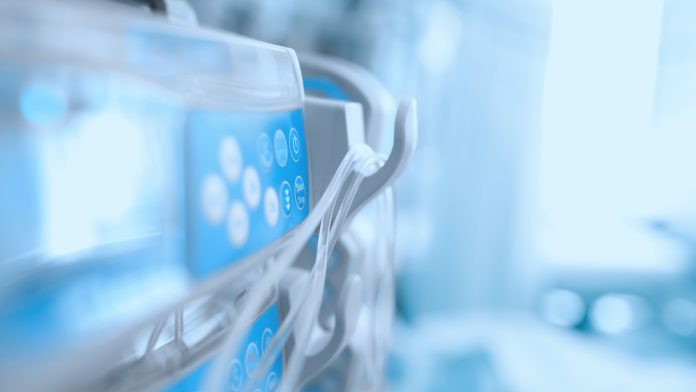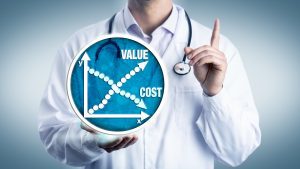
Professor Giorgio Alleva, Former President of the Italian National Institute of Statistics, discusses the policy dialogue surrounding patient access to Advanced Therapy Medicinal Products in Europe.
All potential, eligible patients have the right to access Advanced Therapy Medicinal Products, and national health budget constraints cannot be a barrier to this. Nowadays, traditional reimbursement and budgeting schemes are unable to amortise the value of the Advanced Therapy Medicinal Products, whose costs and benefits are not aligned. These types of therapies need new and different payment and accounting methods, which consider the high initial costs and the large and lasting benefits over time, both for the patients and the national health systems. It is time for an institutional mindset change to classify Advanced Therapy Medicinal Product expenditure as an investment and not a cost which is possible if a decision is taken to review – from Eurostat downwards – the economic/financial classifications of healthcare expenditure currently in force.
Endorsed by 43 Patient Advocacy Groups (PAGs) this was – in synthesis – the key message sent to European and Member State institutions during the Active Citizenship Network event which took place last October. It sought to leverage the potential of advanced therapies for a large number of European citizens in compliance with the budget limits which healthcare has been paying almost all of Europe for some time.
Kindly hosted by a member of the European Parliament, Tomislav Sokol, and supported by the MEP Interest Group ‘European Patients’ Rights and Cross-border Healthcare’, the initiative has been promoted under the patronage of the Czech Presidency of the Council of the EU and realised with the unconditional support of VITA (Value and Innovation for Advanced Therapies coalition).

To better understand this proposal, which aims to make an expenditure for advanced therapies no longer a current but an investment expenditure, we spoke to one of the experts who drafted the proposal made to the European institutions, Giorgio Alleva, Professor of Statistics at the Sapienza University of Rome and former president of ISTAT (Italian National Institute of Statistics).
The effects of Advanced Therapy Medicinal Products can be long-lasting, however public expenditure for these kinds of medicinal products is not accounted for as an investment in any European country today. What would be the advantage of classifying these expenses as investments rather than current expenses?
If it were allowed, the cost of these therapies could be amortised over the years in relation to the savings generated over time. In particular, they could be indicated in the State budget across several years and not all in the year of expenditure. Doing so would significantly increase the financial sustainability of these costs by the public sector over time, and this would promote greater and more equitable use of Advanced Therapy Medicinal Products in the population, without putting public finances at risk.
This innovative approach, which would have the characteristic of a ‘win-win’ formula, would be advantageous both for the patient, who would benefit from highly innovative and effective treatments and for the National Health Service, which could amortise the cost of the therapy over the years.
The definitions and conventions used in national accounts are international. In principle, it must be possible to compare national account data between countries. Considering the current European accounting rules, how could this change be achieved?
Innovation in the compilation of the accounts can be introduced by modifying the regulation or updating its interpretation. Achieving these results requires courage and a strong conviction on the part of the European Parliament.
The current accounting conventions have always been updated periodically according to the evolution of the scientific and political-institutional debate. The revisions of the national accounting system introduced since the 1990s by the international community (UN and EU) have always concerned a progressive enlargement of the perimeter of investments, classifying as such, expenses previously considered current, and thus recognising the increase in the stock of a nation’s capital. Advanced therapies’ expenditures can be considered, at least in part, as investment expenditures. After all, with the 2010 ESA revision, military expenditure was also reclassified from current expenditure to investment expenditure.
Over time, the component of intangible investments has grown steadily in both corporate and public accounts. The inclusion of tangible and intangible assets in the definition of gross fixed investments in national and community accounts shows an expansion of the narrow vision of investments as a mere increase in physical and technological capital. The capitalisation of expenses for the purchase of software, scientific research expenditure, or military expenses were innovations introduced with a new regulation (ESA 2008 and ESA 2010).
What are the technical questions that need to be answered for the classification of Advanced Therapy Medicinal Products in the national accounts as an investment?
1. Are Advanced Therapy Medicinal Products tangible or intangible assets? “An intangible asset is by definition an asset without physical substance…They cannot be held in the hand or tagged with an inventory system” (EPSAS, 2018). Advanced Therapy Medicinal Products are genetic material, but also customised ‘algorithms’ and ‘transfection’ to people suffering from specific pathologies.
2. Are Advanced Therapy Medicinal Products the product of manufacturing processes? Yes, they are products of production processes with a relevant research component. The first requirement to be able to consider Advanced Therapy Medicinal Products as investment assets are met.
3. Are the Advanced Therapy Medicinal Products used multiple times or continuously in these same processes for more than a year? After transfection in the body, Advanced Therapy Medicinal Products continue to function over time; that is, they maintain their curative action.
4. If the Advanced Therapy Medicinal Products can be classified as intangible assets (algorithms and non-cells….), are the other requirements respected?
a. this intangible asset should be identifiable, or separable (or can be sold, transferred, rented,licenced or exchanged) or derives from legal or contractual rights;
b. the public sector entity should have current over it or the power to obtain future economic benefits or service potential from the underlying asset and to limit others’ access to such benefits or potential for service;
c. it is probable that future economic benefits or potential will flow to the entity; and
d. the cost of the asset can be reliably measured.

(While one could presumably support the thesis that requirements b), c) and d) can be met, the critical point for the recognition of Advanced Therapy Medicinal Products as an intangible asset, a component of public investments, is the failure to comply with requirement a). Separability, i.e., the possibility of transferring this intangible asset. This is the same problem for the recognition of human capital among intangible investment assets: failure to transfer or exchange acquired skills between units).
Can public expenditure for the purchase of Advanced Therapy Medicinal Products be classified as a gross fixed investment? At least in part?
One possibility that should be tested is that of a recognition of the R&D cost component. It would be a question of the path that led to the capitalisation of R&D expenses, recognising a collective value. An agreement between Advanced Therapy Medicinal Products manufacturers could at least overcome the issue of competition within the sector and give greater strength to a negotiation with the Public Administration.
What is the value of Advanced Therapy Medicinal Products that could be accounted for? Approach on the side of costs or economic net expected value (NPV)? How can it be accounted for over time in line with the temporal distribution of their effects?
What clearly emerges from the 2010 ESA Regulation is evidence of the consideration of future economic benefits as an estimate of the increase in the value of the capital stock deriving from intangible assets (the case of creative works in order to increase the baggage of knowledge, including human knowledge).
Unless this increase in value can be reasonably estimated, the value of benefits is calculated, by convention, as the sum of costs to produce them. The part that does not provide benefits to the owner is not classified as an activity but is recorded as intermediate consumption.
The estimate of the net economic benefits deriving from Advanced Therapy Medicinal Products will therefore benefit from the vast literature on methods for estimating the effects of investments in healthcare on the wellbeing of the population and the income produced.
How long shall we wait to explore these areas? Why is it not moving us in this direction to recognise as investments such important expenditures for health, wellbeing, and the universal right to health?
A formal proposal to modify a European Regulation in the compilation of the accounts can come from Parliament or the European Council (for example, but not necessarily from the Eurostat Commission) and enter the agenda of the Working Party on Statistics, composed of the Presidents of the national institutes of EU statistics. This body discusses and amends the proposal internally and, if approved, it is then negotiated with the European Parliament and the European Council.
Updates in the interpretation take place through a Eurostat opinion on a proposal from one or more Member States through the National Statistical Institutes (NSIs). In this case, innovations in the classification of expenses can be introduced in a short time.
Updating the Regulations is a long process, as they must pass through working groups, and they can include intermediate phases with satellite accounts and experiments. They certainly need a political push from the Council and/or the European Parliament.
The chief opponent to change is the usual conservatism. I do not think it will be the national accountants, the keepers of the rules, who promote a new classification of expenses for Advanced Therapy Medicinal Products. It can only succeed through a proposal from Parliament, representing European citizens and their needs for health and equal rights.
Interview realised with the support of Maddalena D’Urso and Mariano Votta from Cittadinanzattiva/Active Citizenship Network
Professor Giorgio Alleva
Professor of Statistics
Sapienza University of Rome
This article is from issue 24 of Health Europa Quarterly. Click here to get your free subscription today.










